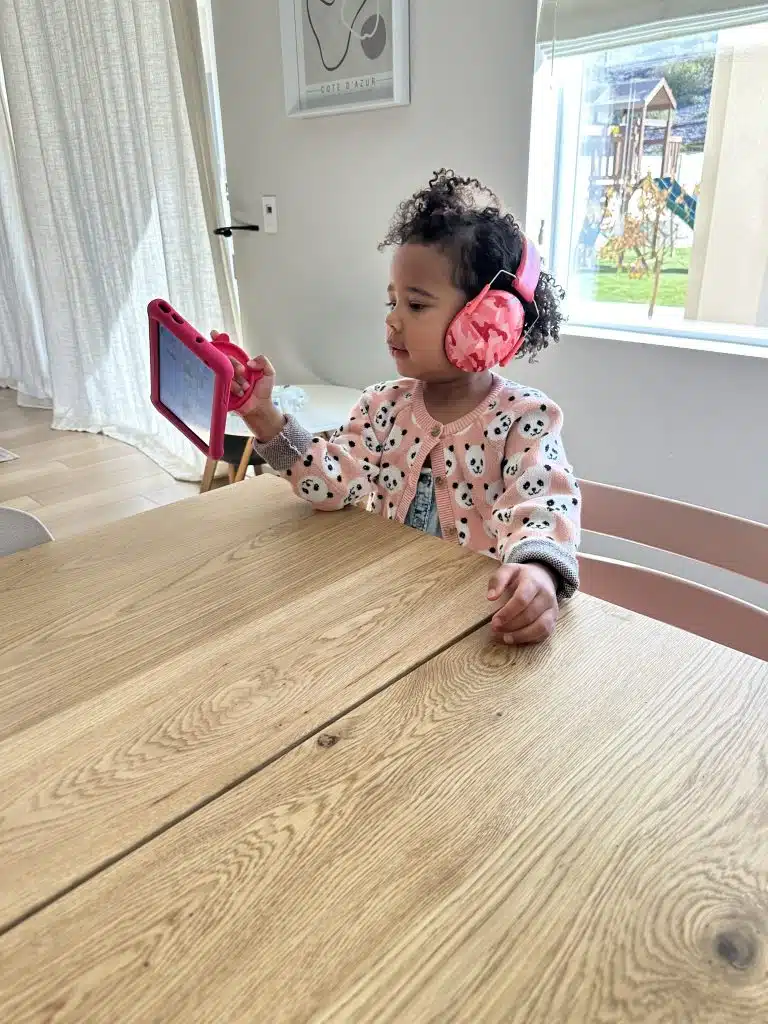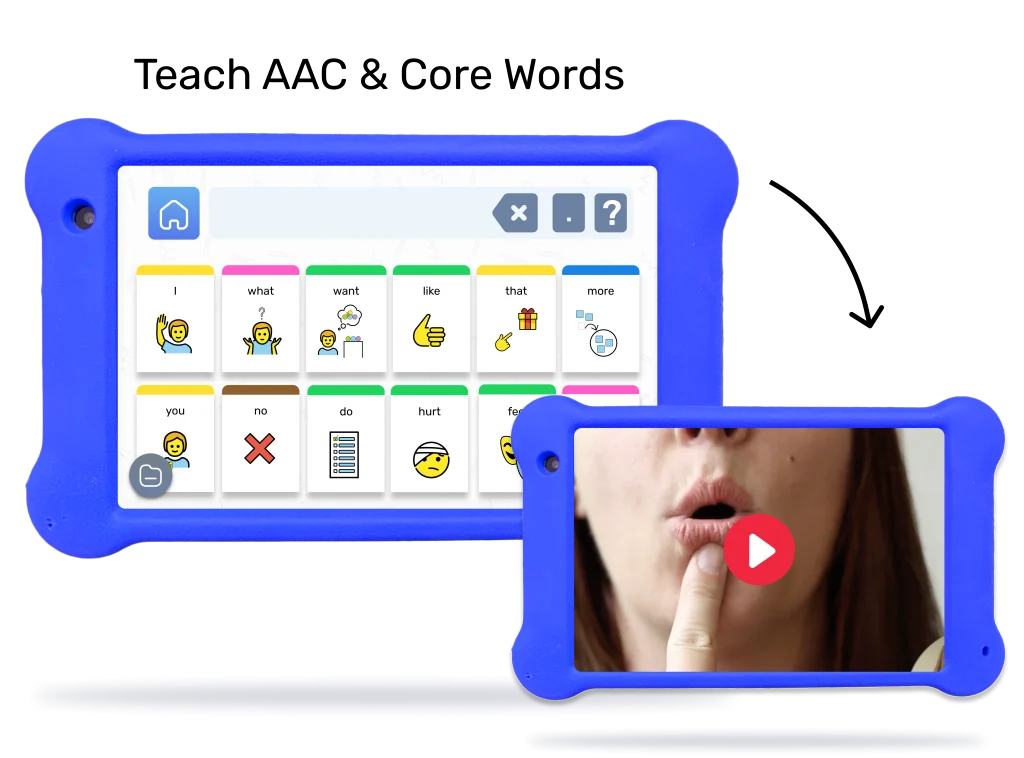When you hear the phrase “sight words,” does it transport you back to your own school days, sitting at a tiny desk with a stack of flashcards? I know it does for me. But now, you’re on the other side of the equation, trying to navigate the world of parenting and education, and you’re wondering how to teach sight words to your child. I get it; it’s a whole different ball game. This blog post is here to help. It’s filled with practical tips, strategies, and resources that will empower you to teach sight words effectively, whether your child is neurotypical or neurodivergent.
Table of Contents
What Are Sight Words?
Sight words play a vital role in everyday language and reading comprehension. Even if you haven’t heard the term before, you’re likely familiar with sight words. These high-frequency words appear frequently in written text and are typically short and commonly used. They are words that we read effortlessly without much conscious thought. Examples of sight words include “the,” “is,” “said,” “who,” “was,” “has,” and “it,” among many others.
There is some focus on teaching sight words in many approaches to teaching literacy. This is because learning to recognize these words will improve reading speed. It’s also thought that less time spent sounding out and decoding these words means better reading comprehension. Learning how to teach sight words is critical for your child’s progress.
Expose Early: The Power of Familiarity
Remember the first time you picked up a book? I’ll bet you were inundated with a sea of words, some familiar, some alien. That’s how your kid feels, too. But here’s the good news: the more they’re exposed to sight words, the better they’ll get at recognizing them.
In other words, familiarity breeds competence. So, start early. Introduce sight words in their daily routine. You can find sight words in children’s books, or better yet, create a sight word-rich environment at home. Hang sight word posters around the room or use sight word books. You’ll be amazed at how quickly your child picks them up!

Read more: When Will a Child Be Able to Recognize Words?
Use Sensory Materials: Engage, Enthrall, Educate
Let’s face it, kids love to play. And when they play, they learn. So, why not use this to our advantage? Use sensory materials to reinforce sight words. For instance, you could use colorful pictures or symbols associated with the word. You could write the word on a dry-erase board or flashcard and have your child trace over it. The key here is to engage their senses, make learning interactive, and, above all, make it fun!
Make it Interactive: Learning as a Shared Experience
Reading isn’t a solo activity, especially for young learners. Make your read-aloud sessions interactive. You could write the sight word with a letter missing on a whiteboard and ask your child to fill in the blanks. Or give them magnetic letters and have them form the word. This not only helps with word recognition but also develops their problem-solving skills. And, of course, it’s a great bonding activity for you and your child.

“I found Goally on Instagram a few months ago and I thought, this sounds like a perfect aid for Ivy. Ivy had just started speaking, but her communication was still very minimal. Goally’s visual schedule and AAC-inspired Talker had me really interested. While we want and believe Ivy will find her voice and spoken language, we also believe that communication comes in many forms. Goally has helped us offer our daughter a voice while she learns to find her own. The key is to support communication in whatever form that takes.” – Cassidy I.
Practice Daily: Consistency is Key
Learning sight words isn’t a one-time event. It’s a process. And like any process, it requires practice. However, practice doesn’t have to be boring. Get creative. Use activities that engage your child’s senses. Write the words in shaving cream, in the sand, or on a chalkboard. The idea is to make sight words a part of their daily life, so much so that recognizing them becomes second nature.
Flashcards: A Time-Tested Tool
Flashcards have been around for ages, and for good reason. They work. Use flashcards of sight words and have your child say the word they see on each card. You can also have them trace the letters as they spell them. This reinforces the word visually and kinetically, making it easier for your child to remember.
Reinforce with Games: Play and Learn
Who said learning can’t be fun? Use games to reinforce sight words. You could play word bingo, word matching, or even hide and seek with sight words. Games make learning enjoyable and provide repeated exposure to sight words, which is crucial for mastery.

Read more: How to Teach Yes No Questions to Kids with Autism
Sort into Categories: Making Sense of Sight Words
Sorting sight words into categories can be a great way to make them more manageable and understandable for your child. You could sort them based on their beginning letter, length, or even frequency of occurrence in texts. This gives your child a system to work with, making the learning process less overwhelming.
Online Courses: Harnessing Technology
Finally, consider introducing an online typing course. In this digital age, typing skills are as important as handwriting. Plus, typing sight words can be a fun and effective reinforcement. Plenty of online courses are available that cater specifically to kids, making learning fun and effective.

Goally | Apps that Teach Kids AAC & Core Words
Is your child facing challenges in expressing themselves or communicating effectively? Goally has one of the best language language learning apps for kids to support their journey in building essential communication skills!

The Word Lab and AAC Talker apps provide a simple, engaging platform for your child to learn core words and become a functional communicator right from the start. Customize the experience with a voice that suits them, and watch as their confidence grows in expressing their thoughts and needs!
To Wrap It Up
So, there you have it. Teaching sight words to your child isn’t an insurmountable task. It’s about creating a rich language environment, making learning interactive, and reinforcing through repetition and play. Remember, every child learns at their own pace, so be patient, be consistent, and most importantly, make it fun. Start today, and you’ll be amazed at how these small steps can make a world of difference in your child’s reading journey. Happy teaching!
FAQs About How To Teach Sight Words to Your Child
What are sight words and why are they important for special needs children? Sight words are commonly used words that young children learn to recognize at a glance, rather than sounding them out. For special needs children, learning sight words is especially important because it helps them build a strong foundation for reading and writing.
What are some fun and interactive ways to teach sight words to special needs children? Some fun and interactive ways to teach sight words to special needs children include using flashcards, playing games like Bingo, using sight word apps, and incorporating multisensory activities like sandpaper letters or textured surfaces to help children remember the shape of the words.
How can I tell if my special needs child is struggling with learning sight words? If your special needs child is struggling with learning sight words, they may have difficulty recognizing the words or spelling them correctly. They may also show signs of frustration or avoidance when asked to practice reading or writing these words.
What are some strategies for helping special needs children who are struggling with sight words? Some strategies for helping special needs children who are struggling with sight words include breaking down the words into smaller parts, using visual aids like pictures or symbols to help them remember the words, and using repetition and positive reinforcement to build their confidence.
How can I make sight word learning more engaging and motivating for my special needs child? To make sight word learning more engaging and motivating for your special needs child, try incorporating their interests into the lessons, using games and hands-on activities, and using positive reinforcement like rewards or praise. It can also be helpful to make learning sight words a collaborative effort by involving siblings or other family members in the learning process.
This post was originally published on 11/07/2022. It was updated on 02/17/2024.

Goally
We help parents teach their kids life skills, like doing bedtime and morning independently. Backed by science, we incorporate evidence-based practices and expert-informed designs in all of our apps and content.





